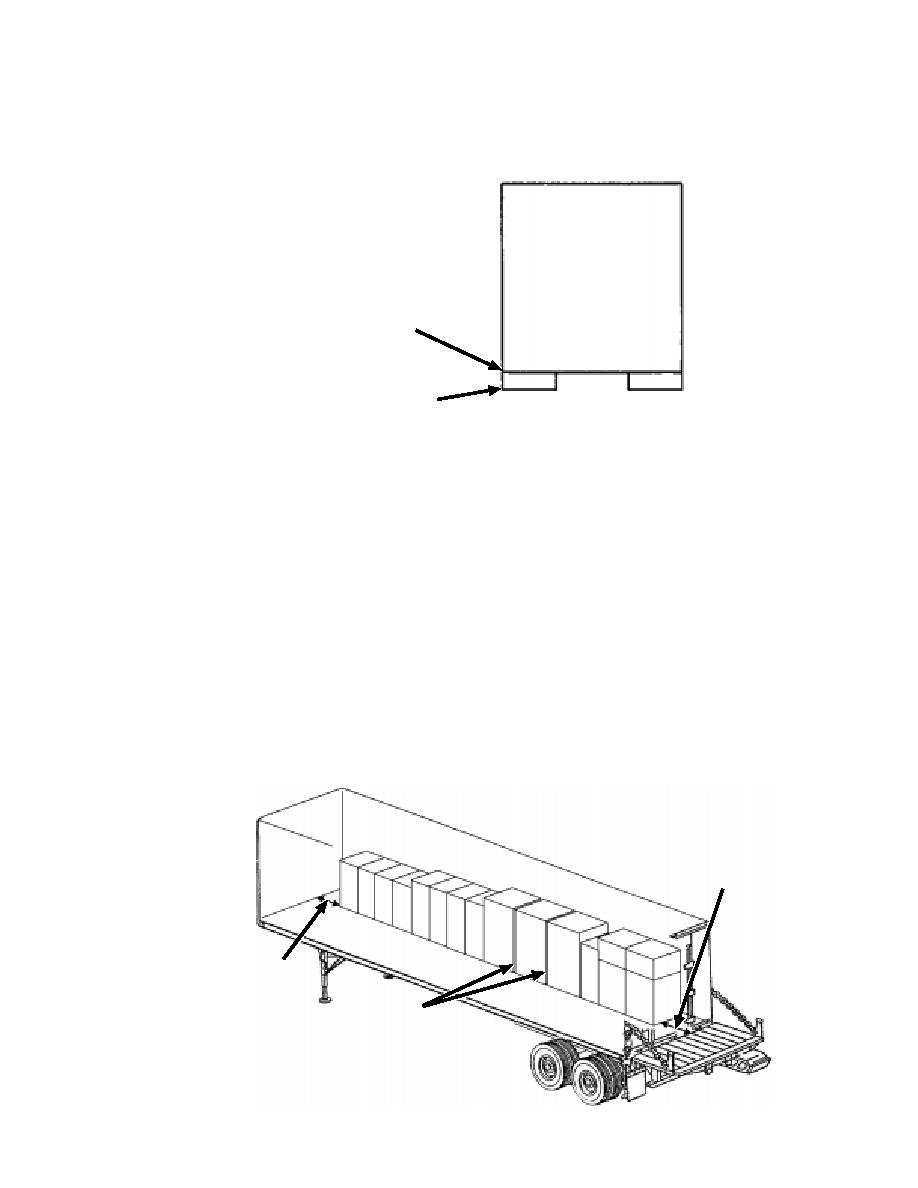
| Tweet |

Custom Search
|
|

|
||
 TM 9-2330-380-14&P
5. If the cabinet being installed has a double layer base, then perform this step. The 7/16 inch (1.11cm) diam-
eter hole in the upper layer (sheet metal) needs to be enlarged to allow a washer and the head of the fastener
to pass through. Drill or cut this hole to approximately a 1 inch (2.54cm) diameter.
Front of
1 inch (2.54cm) Diameter hole
Cabinet
through upper layer
of the base
7/16 inch (1.11cm) Diameter hole
through lower layer
of the base
Cabinet Base Drilling
D. CABINET LAYOUT
1. Position the cabinets in the semitrailer at the desired locations. The base of each cabinet should sit flat on the
floor. The back of each cabinet should be parallel to, and be pushed up against, one of the semitrailer's side-
walls. Adjacent cabinets should be placed uptight against one another when possible. Cabinets may be
stacked per manufacturer's recommendations. Stacked cabinets should be positioned similarly to the floor
units.
2. After all cabinets are positioned, verify that each cabinet functions properly. All doors and drawers should
open freely, and not interfere with an adjacent cabinet.
3. Some instances, due to certain cabinet styles, may require that a small amount of free space be provided
between adjacent cabinets. In those instances, wood or composite spacers should be used between the
adjacent cabinets. Spacers should be at least 2 inches (5.08cm) wide, 6 inches (15.24cm) long, and the
proper thickness to allow proper cabinet functioning. Full-length spacers are the preferred approach.
Minimum 2 feet (60.96cm)
of free space
Minimum of 1 foot (30.48cm)
of free space
Spacers (when needed)
K-3
|
||
 |
||